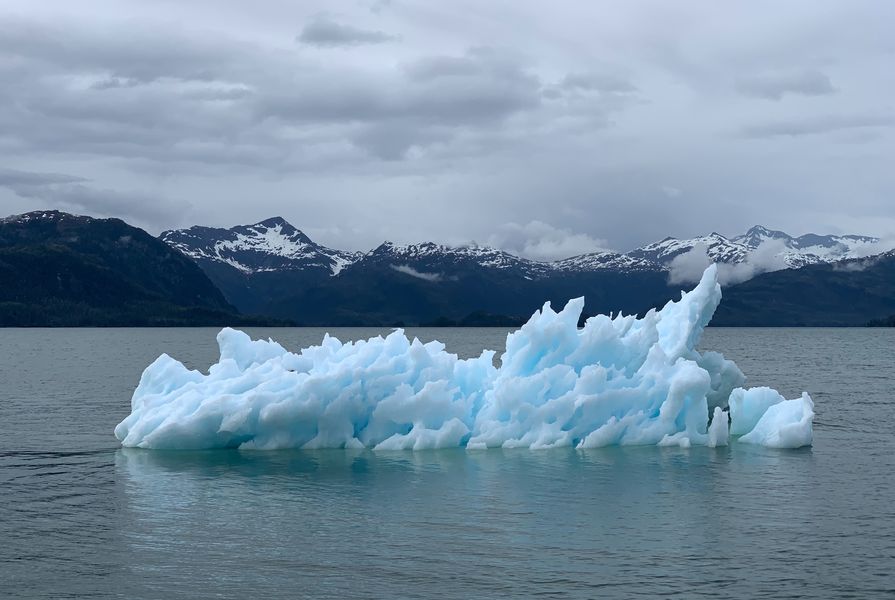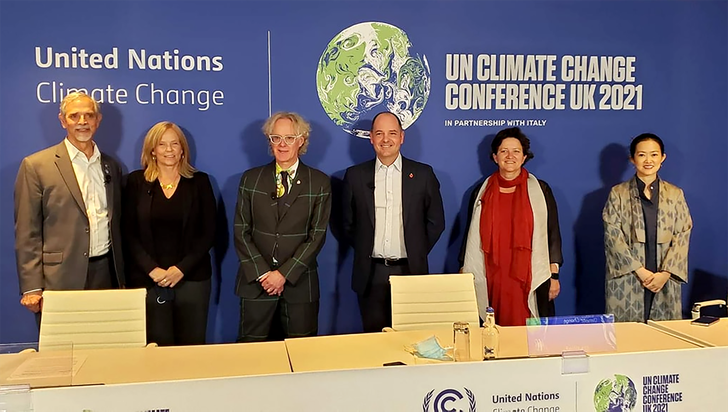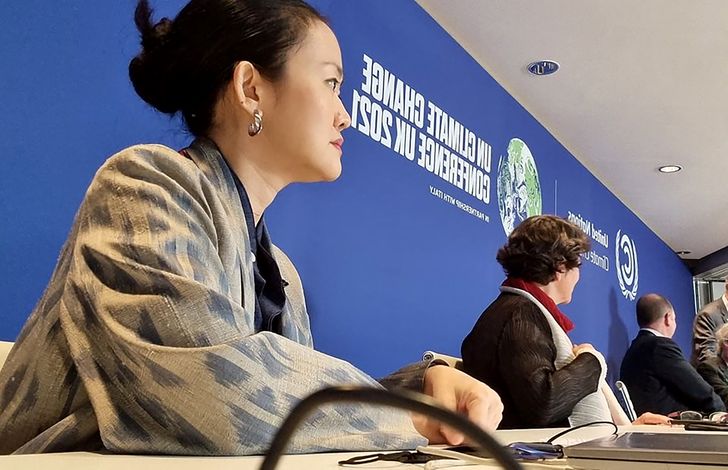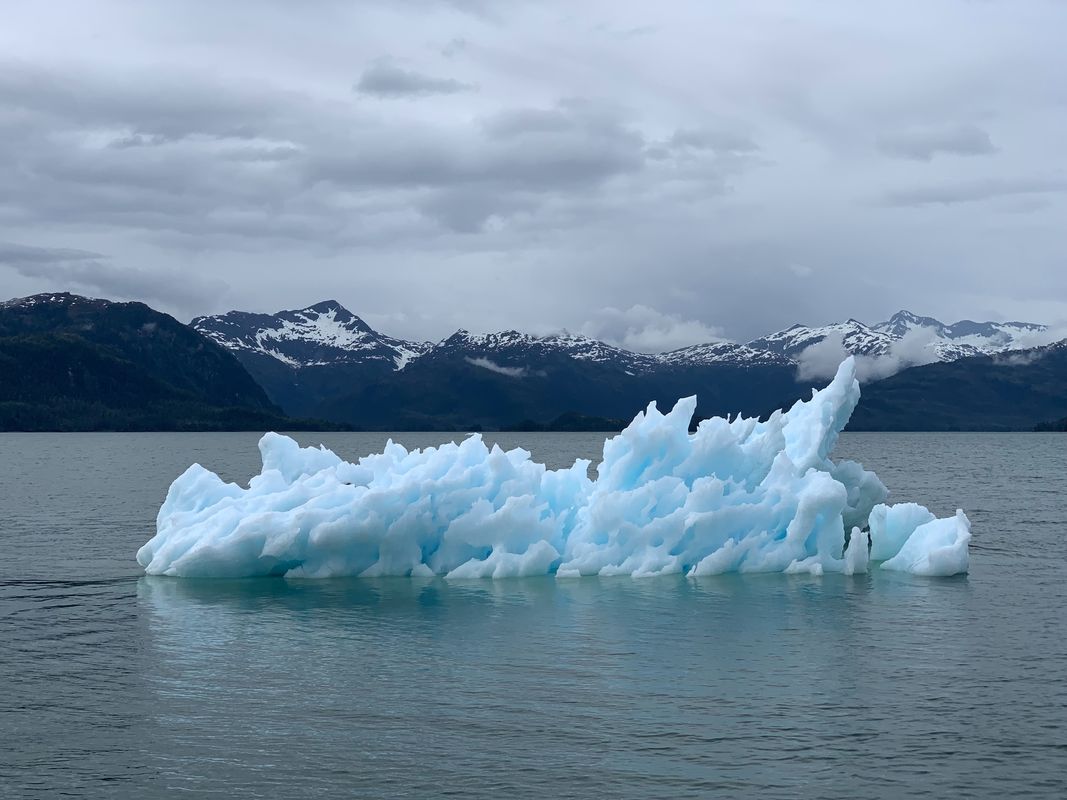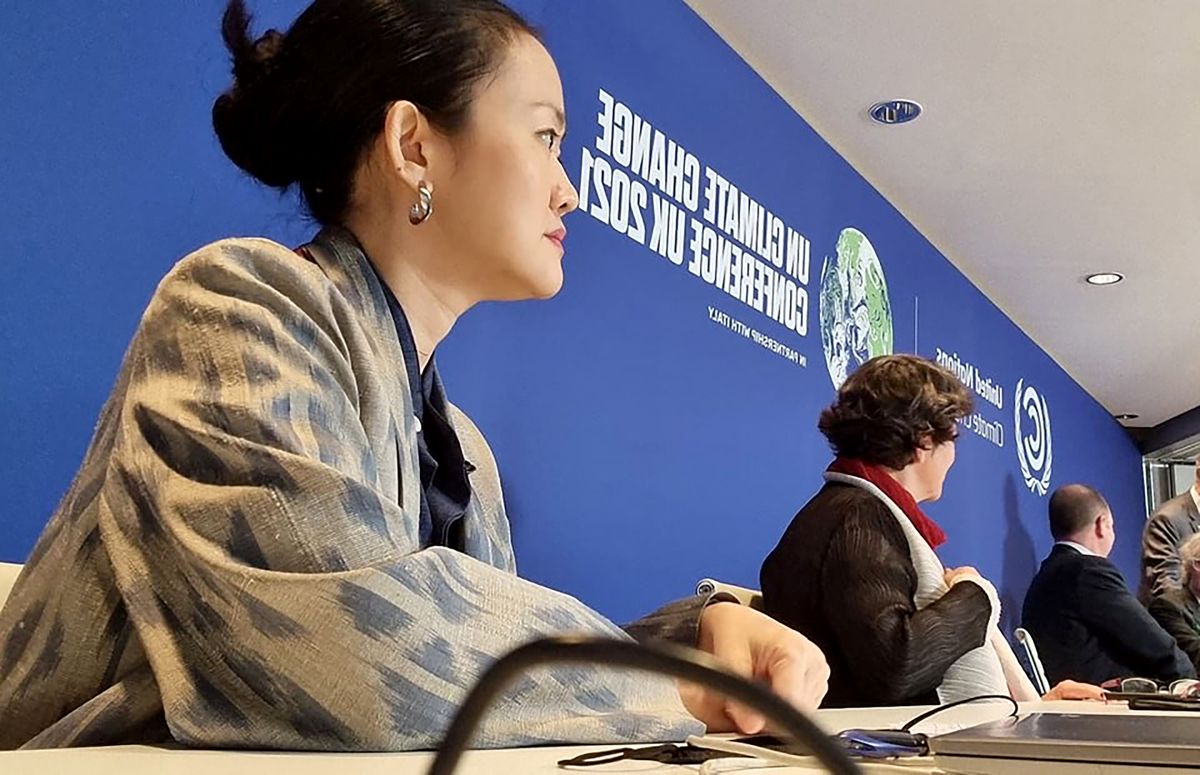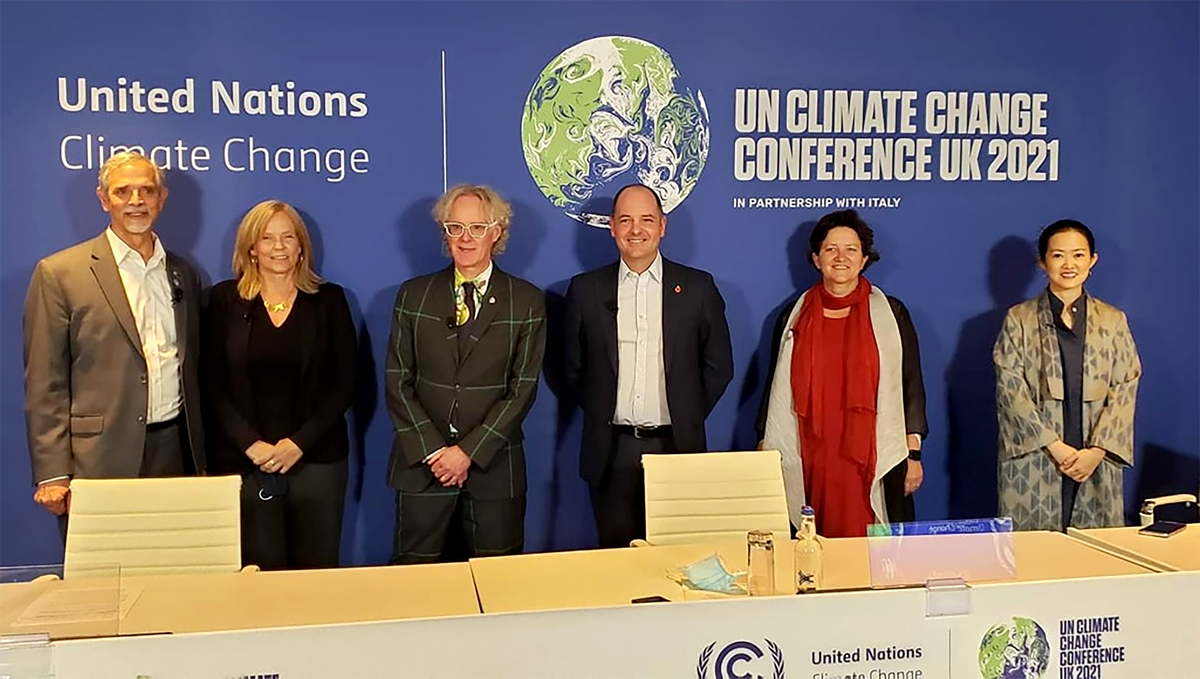On an unseasonably hot Melbourne spring day, tuned into the live stream, I watched on as landscape architect Kotchakorn Voraakhom took her seat at the table. On a screen above the heads of world leaders, the United Nations Global Climate Action Award winner loomed large. Featuring as part of Sir David Attenborough’s inspiring opening address for the 2021 United Nations Climate Change Conference of the Parties (COP26), Voraakhom’s hopeful words range true: “Can we fix the climate problem in one generation? My answer would be yes. We have to.”
In the lead-up to COP26, we saw the release of the UN Intergovernmental Panel on Climate Change (IPCC)’s Sixth Assessment Report. Providing a detailed regional assessment of climate change to inform risk assessment and adaptation, it constitutes “a code red for humanity.”1
COP26 was hosted by the UK, in partnership with Italy, and held in Glasgow between 31 October and 12 November 2021. It was heralded as the most important COP yet because, at this point, the world still has the chance to stay within the 1.5 degrees Celsius of warming required to avoid the most severe effects of climate change.
COP26 was hosted by the UK in partnership with Italy and took place in Glasgow in early November.
Image: Architecture 2030
The four goals of COP26 were: mitigate (to secure global net zero by mid-century and keep 1.5 degrees within reach); adapt (to protect communities and natural habitats); mobilize finance; and work together to deliver. Despite a global pandemic and storms that disrupted the best-laid low-carbon travel plans, a world-record-breaking number of attendees came together. In attendance were 120 world leaders, more than 38,000 participants representing 194 countries (negotiators, government representatives, businesses and civil society groups) and, at times, more than 100,000 protestors.
The format of COP26 comprised two zones. The Blue Zone (a United Nations-managed space) hosted the negotiations and brought together delegations and observer organizations to share their stories at panel discussions, side events, exhibits and cultural events. The Green Zone (managed by the UK government) provided a platform for the general public, indigenous leaders, youth groups, civil society, academia, artists, business and others to have their voices heard, and enabled hundreds of thousands of people to attend virtually from around the world through live-streamed events.
The role of the UK, as the president country of COP26, was to act as an impartial chair and to bring all parties to an agreement by consensus.Two years of negotiations came to a head in two weeks of intensive talks that concluded with all countries agreeing to the Glasgow Climate Pact – to keep 1.5 degrees alive, to finalize the outstanding elements of the Paris Agreement (adopted in 2015) and to urgently accelerate the pace of climate action. The pact contains some meaningful messages and mechanisms, including: the finalization of the Paris Rulebook, which sets out the detailed rules and systems to fully operationalize the Paris Agreement; and the commitment by allcountries to submit information about their emissions and financial, technological and capacity-building support using a common and standardized format, to make reporting more transparent, consistent and comparable.
Thai landscape architect Kotchakorn, founder of Bangkok-based practice Landprocess and a United Nations Global Climate Action Award winner.
Image: Architecture 2030
Other bright spots included the pledges of more than 100 nations to cut 30 percent of their emissions of methane; the commitments of more than 130 nations, who together possess 90 percent of the world’s forests, to halt and reverse deforestation by 2030; and the promise of more than 450 financial institutions, who collectively oversee $130 trillion in assets, to align their portfolios with the goal of achieving net-zero emissions by 2050. Important progress was also made on Article 6 of the Paris Agreement, which clarifies the role of carbon markets – albeit without ensuring the environmental and social integrity of these markets. Disappointingly, and despite, as Mariola Acosta writes ,“in many contexts, women [being] disproportionally more adversely affected by the effects of climate change,”2 slow progress had been made on gender-sensitive climate policies, and there was mixed data on women’s representation at COP26.
While the pact sets the world on track for a 1.5-degree pathway target, current commitments put us on as much as a 2.4-degree pathway, with concern that some of the major emitting countries lack credible pathways to achieve their net-zero targets. Common timeframes were established to “revisit and strengthen” 2030 targets by the end of 2022 and for all countries to submit long-term strategies towards 2050.3
The need to seek consensus saw the use of the term “phase out,” in relation to coal power, replaced by “phase down.” The goal of a just climate transition also remained at arms-length, with high-income nations conceding that they would not meet the $100 billion goal set for 2020 until 2023. On average, African countries are spending10 per cent of their GDP on climate adaptation loss and damage,4 so, despite the Adaptation Fund reaching “unprecedented levels of contributions, with new pledges for $356 million [representing] almost three times its mobilization target for 2022,”5 the pledges fell woefully short.
“Nature” was for the first time recognized as critical to tackling climate change, alongside recognition of the importance of Indigenous peoples’ rights and the need to tackle the commodity supply chains that drive deforestation. The pact emphasized “the importance of protecting, conserving and restoring nature and ecosystems to achieve the Paris Agreement temperature goal, including through forests and other terrestrial and marine ecosystems”.6
Day 12 of COP26 was “Cities, Regions and Built Environment Day.” The UK’s Landscape Institute (LI) was granted observer status in the Blue Zone, allowing them to be present for the negotiations and associated programme of conference activities, and to champion the central role of landscape and green infrastructure in the global journey to net zero. LI’s key requests for the UK government were for equal consideration to be given to mitigation and adaptation; for a natural capital approach to government housing and infrastructure investment; and for investment in green skills, digital and data processes.
Just as the global community came together at COP26, the Australian Institute of Landscape Architects (AILA) and the LI also came together, committing to a cross-border approach to the development of climate-action resources. On the same day, at an official side event hosted by Architecture 2030 with ASHRAE, Kotchakorn Voraakhom, chair of the International Federation of Landscape Architects (IFLA) Climate Change Working Group, presented the AILA-ratified IFLA Climate Action Commitment and demonstrated IFLA’s support for the 1.5°C Cop26 Communiqué.
As the conference ended, UN Secretary-General António Guterres concluded that “the outcome of COP26 is a compromise … It’s an important step, but it’s not enough.”7 For Guterres, “COP27 starts now,”8 but we must not forget the parallel set of talks, the UN Biodiversity Conference (COP15). Hosted by the Chinese government, these virtual negotiations will reach a conclusion in May 2022 at an in-person conference.
COP26 exposed the value and fragility of group consensus. Consensus is a concept that foregrounds equality in collective decision-making, but COP26 has highlighted the inequity of both responsibility and consequence. COP26 drove pledges of climate action from countries, associations and professions, but as the COP26 president Alok Sharma conceded, “We can now say with credibility that we have kept 1.5 degrees alive. But its pulse is weak and it will only survive if we keep our promises and translate commitments into rapid action.”9
1. “Secretary-General Calls Latest IPCC Climate Report ‘Code Red for Humanity,” Stressing ‘Irrefutable’ Evidence of Human Influence,’ United Nations website, 9 August 2021, https://www.un.org/press/en/2021/sgsm20847.doc.htm (accessed 26 November 2021).
2. Mariola Acosta, “COP26: Experts react to the UN climate summit and Glasgow Pact,” The Conversation, 14 November 2021, theconversation.com/cop26-experts-react-to-the-un-climate-summit-and-glasgow-pact-171753 (accessed 26 November 2021).
3. Helen Mountford et al., “COP26: Key outcomes from the UN climate talks in Glasgow,” World Resources Institute, 17 November 2021, wri.org/insights/cop26-key-outcomes-un-climate-talks-glasgow (accessed 26 November 2021).
4. Jacqueline Peel, “What was achieved at COP26?” Pursuit, The University of Melbourne, 15 November 2021, pursuit.unimelb.edu.au/articles/what-was-achieved-at-cop26 (accessed 26 November 2021).
5. Helen Mountford et al., “COP26: Key outcomes from the UN climate talks in Glasgow.”
6. UNFCCC, Glasgow Climate Pact, 13 November 2021, unfccc.int/documents/310497 (accessed 26 November 2021).
7. António Guterres, Twitter post, 14 November 2021, twitter.com/antonioguterres/status/1459615542764093447.
8. United Nations Climate Change, “Secretary-General’s statement on the conclusion of the UN Climate Change Conference COP26,” unfccc.int/news/secretary-general-s-statement-on-the-conclusion-of-the-un-climate-change-conference-cop26 (accessed 26 November 2021).
9. UN Climate Change Conference UK 2021, “COP26 keeps 1.5C alive and finalises Paris agreement,” 13 November 2021, ukcop26.org/cop26-keeps-1-5c-alive-and-finalises-paris-agreement (accessed 26 November 2021).

